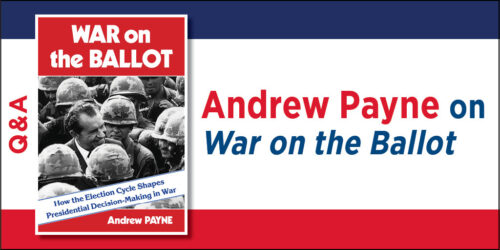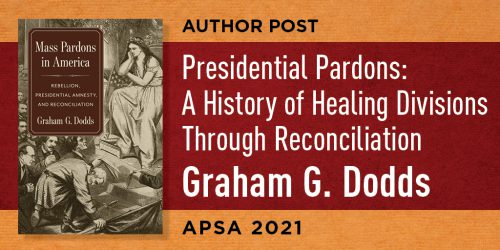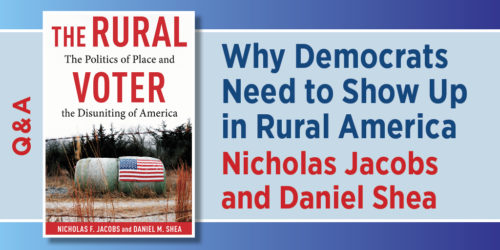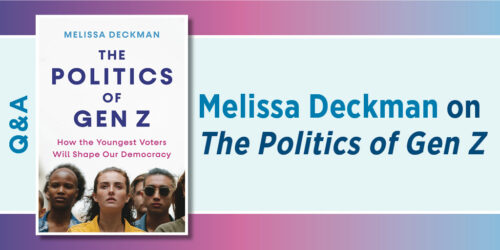Was January 6, 2021, a Rehearsal for a Greater Threat to American Democracy?
Brigitte L. Nacos, Yaeli Bloch-Elkon, and Robert Y. Shapiro

As a presidential candidate and the president of the United States, Donald Trump played a starring role in bringing hate speech, violent threats, and actual violence into the political mainstream. As a former president and once again a presidential candidate, he has glorified the criminally convicted participants in the violent breach of the U.S. Capitol on January 6, 2021, calling them hostages and promising to pardon them on day one of his second presidency. At the end of our book, Hate Speech and Political Violence: From the Tea Party to Insurrection, we expressed a pessimistic view of what might happen before and after the 2024 election, wondering whether the failed insurrection of January 6 might have been a rehearsal for a much greater threat to American democracy. Trump and his hardline MAGA supporters consider the current campaign an existential fight for their American ideal. In Trump’s words, “This is the final battle. . . . Either the communists win and destroy America, or we destroy the communists.” Given this reality and threats of a second revolution among a core of far-right Republican Trump loyalists, we argue here that the political situation has become more precarious than a year ago, when we finished the manuscript for our book.
Trump said he had “every right to interfere with the 2020 election.” Earlier he claimed that massive election fraud “allows for the termination of all rules, regulations, and articles, even those found in the Constitution.” He and his supporters have already been laying a controversial groundwork for contesting the election if he loses, and Trump Republicans in key states have been trying to control the electoral process regarding the certification of electoral votes.
The hateful far-right rhetoric that we documented in our book has continued in the current campaign in the context of severe partisan conflict over the many issues that have come to divide the parties along ideological lines. Recent elections have been increasingly close, and the stakes regarding policy change could not be greater, especially given the increasing prospects in recent years for unified partisan control of the presidency and Congress (including control of judicial appointments). This has heightened the emotional level of politics, leading both sides to increasingly dislike the other and not just disagree on issues. This “affective partisanship” has spurred both sides to harden, as we emphasize in the book, as they also have come to have different perceptions of reality, with the conflict over the 2020 election results and the assault on the Capitol as a case in point.
The hateful far-right rhetoric that we documented in our book has continued in the current campaign in the context of severe partisan conflict over the many issues that have come to divide the parties along ideological lines.
Trump has been characterized and criticized as a populist and autocrat. He is, most of all, a demagogue who distinguishes between his loyal and good in-group (“we”) and disloyal and evil outgroups (“they”). He is a master in scapegoating “them” for all kinds of political, social, and cultural problems, with Hillary Clinton, Barack Obama, Joe Biden, the Democrats, the liberal “deep state,” and undocumented immigrants high on his lists of scapegoats. Once Kamala Harris became the Democratic Party’s nominee, she also became the primary target of Trump’s personal, even obscene attacks in words and visuals. He regularly calls her “Comrade Kamala” to typecast her as a communist.
Like other leaders with strong autocratic traits, Trump has a history of condoning and even encouraging violence. Here are just a few cases:
- After the MSNBC anchor Ali Velshi covered a peaceful Black Lives Matter demonstration and was hit by a rubber bullet, Donald Trump recalled the incident at a campaign rally in September 2020 as he promoted a tough law-and-order stance: “They [law enforcement officers] threw him aside like he was a little bag of popcorn,” the president “But I mean honestly, when you watch the crap that we’ve all had to take so long . . . when you see it, it’s actually a beautiful sight.”
- Informed by his security team that protesters were going to throw tomatoes at one of his 2016 campaign events, Trump told his supporters, “If you see somebody getting ready to throw a tomato, knock the crap out of them, would you? OK? Just knock the hell. I promise you I will pay for the legal fees. I promise.”
In this political climate, threats of violence and actual violence against well-known politicians and other public figures by lone wolf terrorists increased. This was particularly true for members of Congress and their families. In 2016, the year Trump was elected president, the U.S. Capitol Police documented 902 threats against members of Congress. In the next four years, during Trump’s presidency, these threats rose to 8,613. This trend continued and affected the families of congressional members, too. In October 2022, a far-right Trump and QAnon supporter seriously injured the husband of former House Speaker Nancy Pelosi after invading the Pelosi house in search of “Nancy.” Trump embraced a crude QAnon conspiracy theory about an alleged relationship between Paul Pelosi and the violent intruder that never existed.
Nearly two years later, in July 2024, Trump himself was the target of an assassination attempt when a bullet grazed one of his ears while he addressed an enthusiastic crowd in a small town in Pennsylvania. Soon thereafter, he said at a campaign stop in Michigan, “I took a bullet for democracy . . . the Democrat Party is not the party of democracy. They’re really enemies of democracy.” A shot that could have killed him became another weaponized campaign message of hate and division.
Trump, who has often praised strongmen like North Korean dictator Kim Jong Un, the Russian president Vladimir Putin, and Hungary’s Viktor Orban, said repeatedly that he would be “a dictator for one day,” when getting back into the White House. While Trump supporters excuse these sorts of remarks as just talk without consequences, there is good reason not to ignore the spoken and written words of would-be strongmen.
While Trump supporters excuse these sorts of remarks as just talk without consequences, there is good reason not to ignore the spoken and written words of would-be strongmen.
Late last year, Trump said at a campaign stop in New Hampshire, “We pledge to you that we will root out the communists, Marxists, fascists, and the radical left thugs that live like vermin within the confines of our country that lie and steal and cheat on elections. . . . They’ll do anything, whether legally or illegally, to destroy America and to destroy the American Dream.” Trump has again claimed that he and his MAGA supporters are now fighting “the final battle.” Kevin Roberts, a close Trump ally and president of the Heritage Foundation, which produced the far-right blueprint Project 2025 for the radical deconstruction of the so-called deep state, put it even more bluntly when he declared that the country is in the midst of a “second American Revolution” that will be bloodless “if the Left allows it to be.”
Four years ago, then President Trump told the violent far-right Proud Boys during a presidential debate to “stand back and stand by.” The Proud Boys, Oath Keepers, and similar groups did “stand by” and participated with well-trained units in the violent invasion of the Capitol. The leaders of these organizations are serving long prison terms, but their groups have remained active. strong, and ready to fight. There are no comparable armed and trained groups to counter another insurrection attempt if Trump loses the 2024 election.. Antifa, often mentioned by Trump supporters as violent extremist movement of the Left, is a disorganized entity of at best several hundred young activists.
That’s why we ponder whether January 6, 2021, was merely a rehearsal for a more serious threat to American democracy. The one difference is that this time it is President Joseph Biden, and not Donald Trump, who will be the one in power to respond with force, if necessary, to whatever violence occurs.
Brigitte L. Nacos is a political scientist who taught for three decades at Columbia University. She is also a journalist who worked for many years as U.S. foreign correspondent for German newspapers. Yaeli Bloch-Elkon is a senior lecturer and associate professor of communications and political science and head of the International Communication program at Bar Ilan University as well as an associate research scholar at Columbia University’s Institute for Social and Economic Research and Policy. And Robert Y. Shapiro is the Wallace S. Sayre Professor of Government in the Department of Political Science and the School of International and Public Affairs at Columbia University. They are the authors of Hate Speech and Political Violence: Far-Right Rhetoric from the Tea Party to the Insurrection








